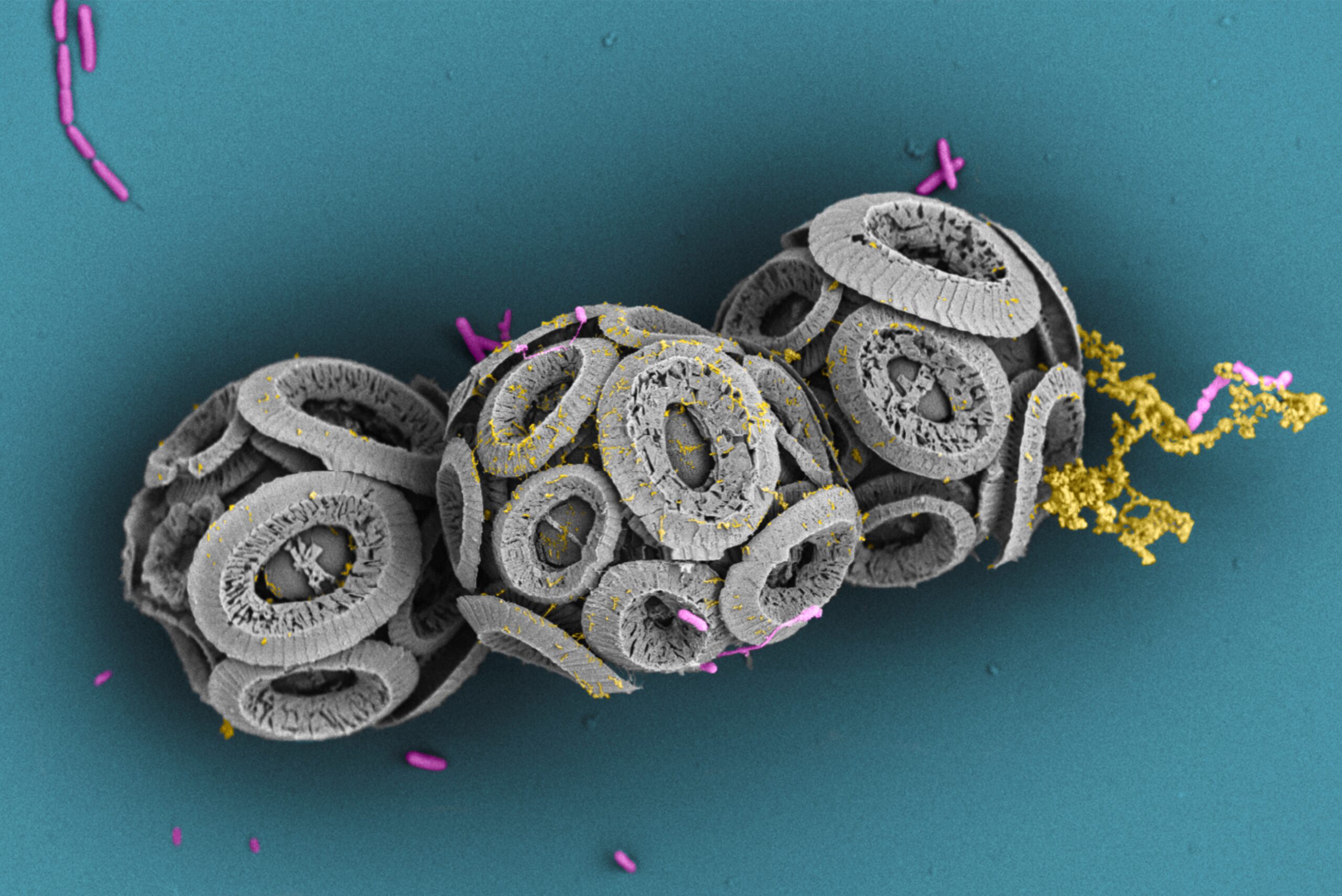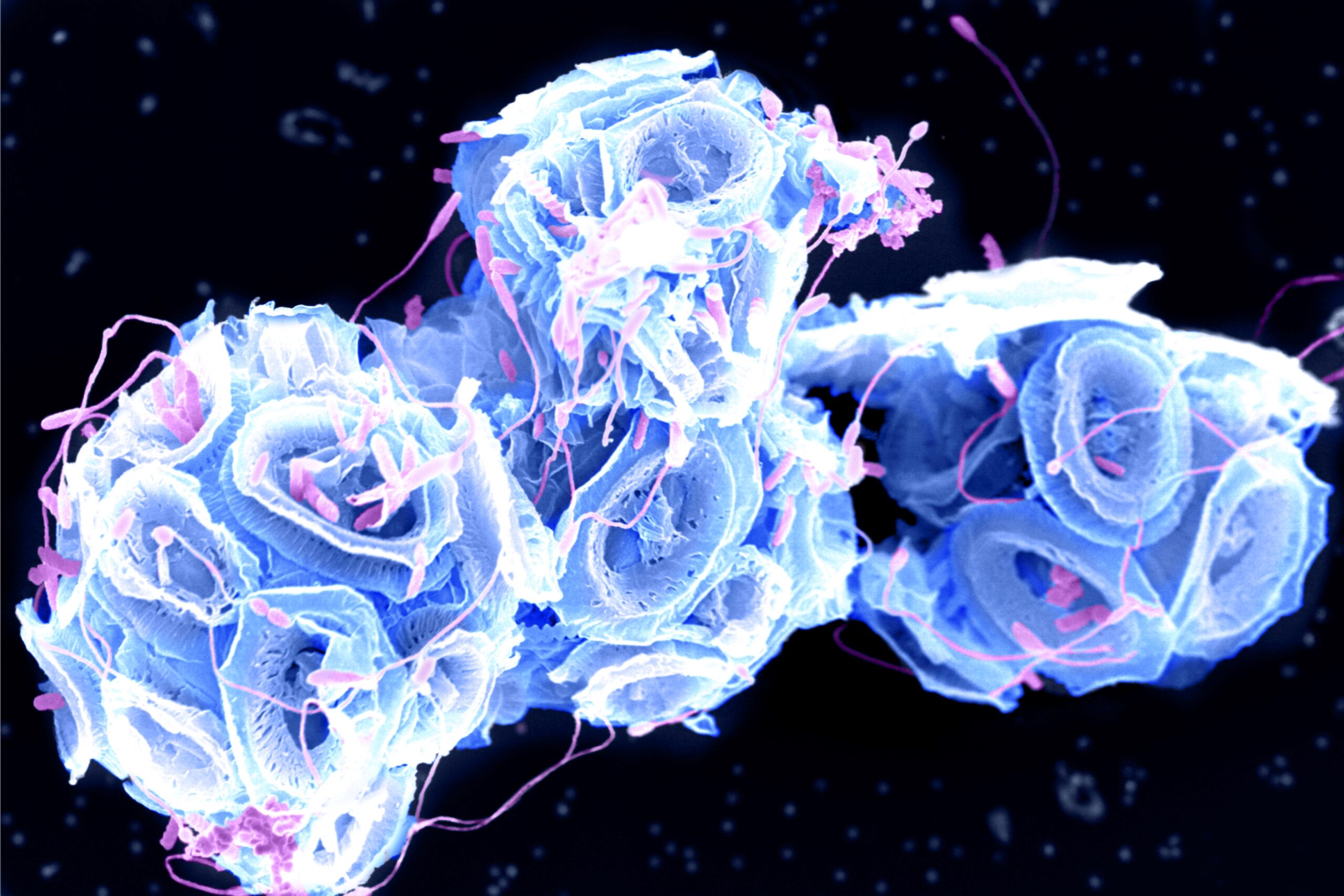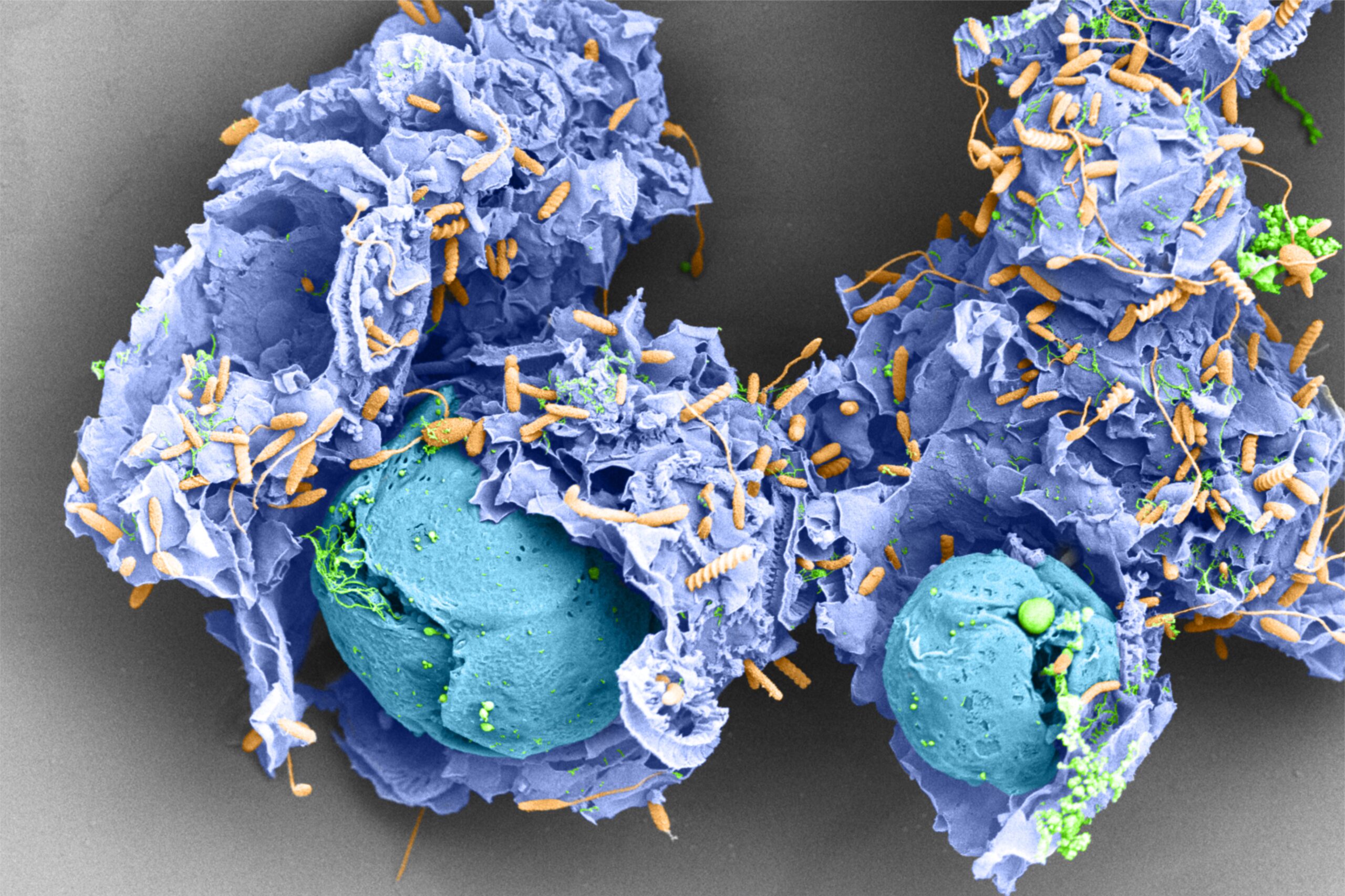Marine unicellular algae, also called phytoplankton, are key to the world’s oxygen production and form the foundation of oceanic ecosystems. These tiny creatures, however, do not exist in isolation, but are surrounded by bacteria that can influence their activity and behaviour: some can be pathogenic, but many are beneficial, and can enhance the algae’s productivity in difficult conditions.
Our work in this area focuses on resolving phytoplankton–bacterial interactions: how they encounter one another, under what conditions they interact, and the benefits (or harm) each party experiences. Using microfluidics and time-lapse microscopy, we gain mechanistic insights into these interactions on a single-cell level, which, coupled to bulk population behaviours, allows us to interpret their effect on an environmental scale.
Funding: GBMF


